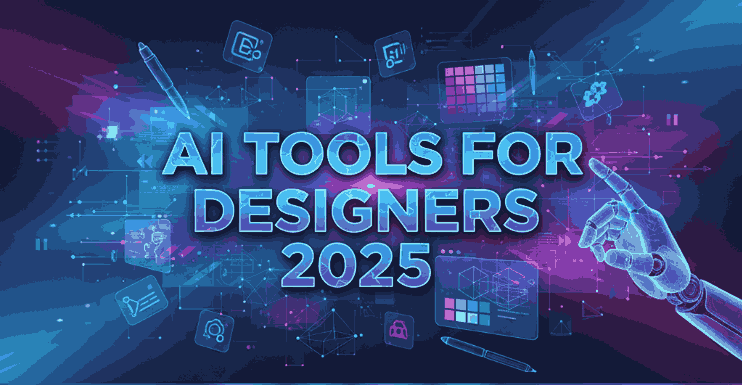
Table of Contents
- Introduction
- What Is ChatGPT and Why It Matters to Designers
- How Graphic Designers Can Use ChatGPT in Their Workflow
- Benefits of ChatGPT for Graphic Designers
- Real-World Examples and Creative Applications
- Recommended Fonts to Complement Your Designs
- Final Thoughts
- References
1. Introduction ChatGPT for Graphic Designers
In the ever-evolving world of digital design, artificial intelligence (AI) has become a creative partner rather than a competitor. Among the most revolutionary tools today is ChatGPT for Graphic Designers, an AI language model developed by OpenAI. While writers and marketers have embraced it quickly, graphic designers are also discovering its power to inspire ideas, streamline workflows, and push creative boundaries.
This article explores how ChatGPT for graphic designers is shaping a new era of creativity, collaboration, and innovation — and how designers can leverage it to produce stunning results more efficiently.
2. What Is ChatGPT and Why It Matters to Designers
ChatGPT is an AI-powered language model that can generate text, brainstorm concepts, and even simulate creative dialogues. For designers, it acts as a virtual assistant that helps with:
- Creative idea generation
- Design brief interpretation
- Content creation for portfolios and social media
- Naming, branding, and tagline ideas
- Visual storytelling inspiration
In the digital age, where time efficiency and creative originality are vital, ChatGPT offers designers an edge by speeding up repetitive tasks and expanding their conceptual thinking.

3. How Can Use ChatGPT for Graphic Designers in Their Workflow
Here are several practical ways graphic designers can incorporate ChatGPT into their creative routine:
a. Brainstorming Design Concepts
Need fresh ideas for a logo or campaign? ChatGPT can generate moodboard descriptions, suggest color palettes, and offer thematic directions — all within seconds.
b. Writing Captions and Brand Copy
Good design often needs compelling words. ChatGPT helps craft engaging captions, slogans, or presentation notes that align with your visual style.
c. Generating Client Briefs and Proposals
Instead of writing project summaries from scratch, you can ask ChatGPT to outline proposals, saving valuable time for creative work.
d. Enhancing Collaboration
ChatGPT can serve as a bridge between designers, clients, and marketing teams by refining language and ensuring design concepts are clearly communicated.
e. Learning and Skill Growth
Designers can ask ChatGPT for quick explanations about typography, color theory, or UX trends — effectively turning it into a 24/7 learning companion.
4. Benefits of ChatGPT for Graphic Designers
Using ChatGPT in your creative process offers multiple advantages:
- Idea Expansion: Generates diverse perspectives and unique angles.
- Efficiency Boost: Reduces time spent on administrative and copy tasks.
- Inspiration Source: Helps overcome creative blocks and generate fresh ideas.
- Professional Communication: Improves proposals, briefs, and presentation quality.
- Accessibility: Available anytime, anywhere — a virtual design partner in your pocket.
With the right prompts, ChatGPT becomes not just a tool, but an extension of your creative thinking.

5. Real-World Examples and Creative Applications
- Logo Design: Use ChatGPT to suggest conceptual themes like “modern minimalism” or “vintage luxury,” then visualize those ideas in your sketches.
- Social Media Design: Generate catchy captions or ad copy that perfectly matches your visuals.
- Branding Projects: Brainstorm brand values, tone of voice, and style guides collaboratively with the AI.
To see how fonts can elevate such creative work, explore these unique font mockups from Calligraphy Fonts:
- Ravenously Font – Bold and energetic, perfect for streetwear and creative branding.
- Barley Round Font – A rounded display font for modern, friendly visuals.
- Hashtag Trend Font – Trendy and dynamic, ideal for tech and digital themes.
- Overcame Font – A stylish brush font suited for motivational or artistic projects.
These fonts pair beautifully with AI-driven design workflows — adding personality and human touch to digitally inspired creations.
6. Recommended Fonts to Complement Your ChatGPT for Graphic Designers
When blending AI tools like ChatGPT with your creative process, choosing the right font helps communicate your vision effectively.
Here’s how you can use them:
- ChatGPT-generated branding ideas → visualize with Hashtag Trend Font.
- AI-inspired motivational posters → use Overcame Font.
- Concept presentation decks → pair Barley Round Font for readability.
- Urban design projects → apply Ravenously Font for bold impact.
Each font reflects a distinct tone and emotion — allowing designers to keep the “human feel” in AI-assisted projects.
7. Final Thoughts
The fusion of ChatGPT and graphic design represents a new frontier of creativity. Rather than replacing artists, AI enhances their capacity to think, experiment, and communicate. Designers who embrace ChatGPT can unlock higher productivity, fresher ideas, and greater storytelling potential.
In short: ChatGPT empowers designers to create smarter, faster, and more creatively.
8. References
To increase your article’s authority, link to these reputable sources:



